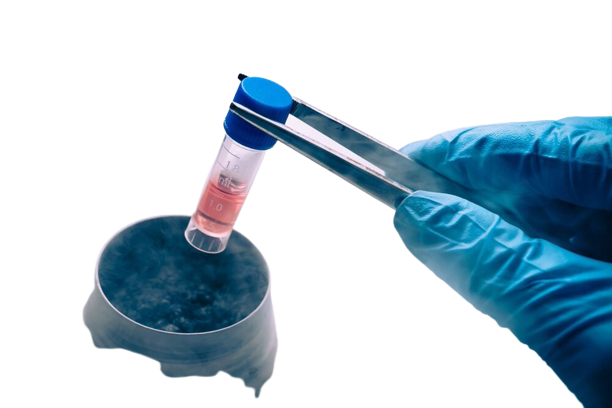Fertility Preservation
Empowering Choices for Tomorrow's Parenthood
Welcome to the fascinating world of fertility preservation, a revolutionary approach that allows individuals to safeguard their reproductive potential. Fertility preservation refers to the process of safeguarding reproductive cells (eggs or sperm) for future use, allowing individuals to preserve their fertility potential. It is a proactive measure taken by those who wish to protect their ability to have biological children at a later stage in life. There are various reasons why individuals opt for fertility preservation. Some may choose it due to medical treatments that could affect their fertility, such as chemotherapy or radiation therapy. Others may choose it for personal reasons, such as focusing on career goals, delayed family planning, or uncertainty in finding the right partner.

FERTILITY PRESERVATION METHODS INCLUDE
Egg Freezing (Oocyte Cryopreservation)
This involves retrieving a woman's mature eggs, freezing them, and storing them for future use. When ready to conceive, the eggs can be thawed, fertilized with sperm (either from a partner or a donor), and transferred to the uterus.
Sperm Freezing (Sperm Cryopreservation)
Men can preserve their fertility by freezing and storing their sperm. This method is beneficial for those facing medical treatments, undergoing vasectomy, or anticipating fertility decline. The frozen sperm can be used later for assisted reproductive techniques, such as in vitro fertilization (IVF) or intrauterine insemination (IUI).
Embryo Cryopreservation
Couples undergoing IVF can choose to freeze and store their excess embryos. These embryos can be used in the future if natural conception is challenging or if they decide to expand their family later on. Embryo cryopreservation offers the possibility of using the embryos for future transfer into the uterus.
FERTILITY PRESERVATION PROCEDURES
The specific procedures involved in fertility preservation vary depending on whether it's egg freezing, sperm freezing, or embryo cryopreservation. Here's an overview of each procedure:.
Egg Freezing (Oocyte Cryopreservation)

Ovarian Stimulation
To retrieve multiple eggs, the individual typically undergoes hormonal medications to stimulate the ovaries, promoting the development of multiple mature eggs.

Egg Retrieval
The mature eggs are collected through a minor surgical procedure called transvaginal ultrasound-guided follicle aspiration. This procedure is performed under sedation or anesthesia.

Cryopreservation
The retrieved eggs are then rapidly cooled and frozen using a process called vitrification. This technique prevents ice crystal formation, ensuring the eggs' cellular integrity during the freezing process.

Storage
The frozen eggs are safely stored in specialized cryopreservation facilities until the individual decides to use them.
Embryo Cryopreservation:
Ovarian Stimulation and Egg Retrieval: The woman undergoes ovarian stimulation to produce multiple mature eggs. The eggs are retrieved through transvaginal ultrasound-guided follicle aspiration.
Fertilization: The retrieved eggs are fertilized with sperm, either from a partner or a donor, through conventional IVF. This involves combining the eggs and sperm in a laboratory dish and allowing fertilization to occur.
Embryo Development: The fertilized eggs, now embryos, are monitored in the laboratory for several days to assess their development and quality.
Embryo Cryopreservation: The viable and high-quality embryos are selected for cryopreservation. Similar to egg freezing, vitrification is used to rapidly freeze the embryos, preserving their viability.
Storage: The frozen embryos are stored until the individual or couple decides to use them in a future IVF cycle.
Sperm Freezing (Sperm Cryopreservation):
Semen Collection : The man provides a semen sample through ejaculation either at the fertility clinic or in a private room at the clinic.
Semen Processing : The semen sample undergoes laboratory processing, which involves separating the sperm from the seminal fluid and additives.
Cryopreservation : The processed sperm is mixed with a cryoprotectant solution and then divided into small vials or straws. These vials/straws are gradually frozen and stored in liquid nitrogen tanks to maintain the sperm's viability.
Storage : The frozen sperm samples are securely stored until they are needed for future use.
GYNESCOPE
Contact Us
Call: +234 816 659 3030
Email: gynescope@yahoo.com
Address: G.U Ake Rd 22/23
Newsletter
© 2023 Gynescope All Rights Reserved



